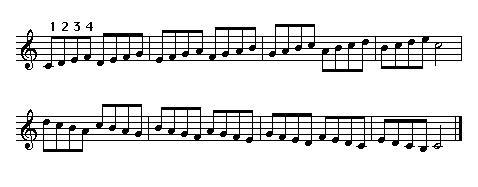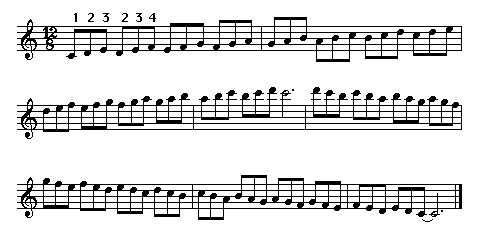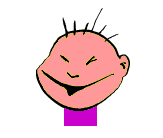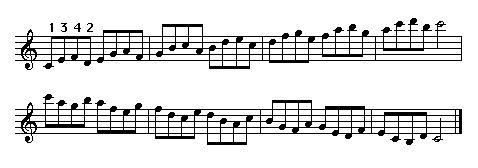(Down - Up - Top - Jazclass Links)
WS 1.2 - Major scale practice
The major scale is the single most important source for improvisation (and Western music in general). So it is obvious that you start here.
Play the major scale over at least 2 octaves up and down over your instrument.
On the piano there is of course no problem.
But on the saxophone for example you may not be able to go up 2 octaves. Try to make it a 2 octave loop instead. For example play the A scale from A up to high E , then down to low E , then back up to the A you started from. |
Play the scale in all 12 keys in this manner.
Play successive keys in Circle of Fifth order (going in either direction) or in chromatic order (up or down).
In the Downloading Bay are two Play-a-Long Midi files.
- one track going in Circle of 5ths order :
C - F - Bb - Eb - Ab - Db - Gb - B - E - A - D - G -
the other track in chromatic order :
C - Db - D - Eb - E - F - Gb - G - Ab - A - Bb - B
Each key is played for 8 bars.
Play the following 4 bar exercise twice in each key :

(Down - Up - Top - Jazclass Links)
WS 1.3 - Scale segments
Once you get comfortable with the whole scale in each key start working on patterns of scale segments.
Work on the following three patterns.
The 1 2 3 1 - 2 3 4 2 - pattern :
Audio 1

The 1 2 3 4 - 2 3 4 5 - pattern :
Audio 2

The 1 2 3 - 2 3 4 - 3 4 5 - pattern :
Audio 3


Practise first without the Play-a-Long track.
Practise each pattern until you can play it fluently, without any hesitation or mistake, at a very slow speed.
Then, and only then, gradually increase the tempo.There is no point in practising at a speed where you keep making mistakes, you only learn how not to play it, and you are wasting valuable practice time !
Once you become fluent in all keys start using the Midi tracks.
(Down - Up - Top - Jazclass Links)
WS 1.4 - Diads
Diads are patterns of broken 3rds.
Here are two important patterns you should practise.
The 1 3 - 2 4 - 3 5 - pattern (diads played straight) :
Audio 4

The 1 3 4 2 - 3 5 6 4 - pattern (every second diad is played backwards) :
Audio 5

Try to play all patterns using your ear and your knowledge of the scale.
Refer to written notation only as a last resort.It is a good idea to write out the patterns in difficult keys on paper, but while playing only look at it when you are stuck. The objective is to teach your mind as well as your fingers.